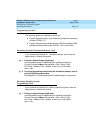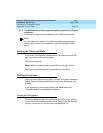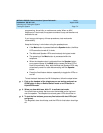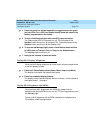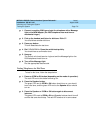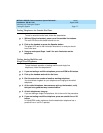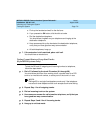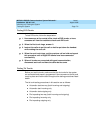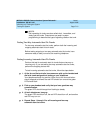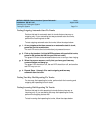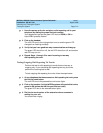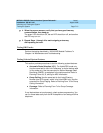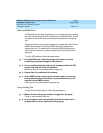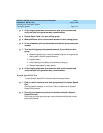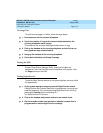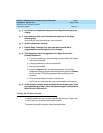
MERLIN LEGEND Communications System Release 6.1
Installation
555-661-140
Issue 1
August 1998
Initializing and Testing the System
Page 7-10
Testing the System
NOTE:
Dial-repeating tie trunks are also called
wink-, immediate-,
and
delay-type tie trunks.
These terms are used in system
programming to describe the type of signaling used on the trunk.
Testing Two-Way Automatic-Start Tie Trunks
For two-way automatic-start tie trunks, perform both the incoming and
outgoing automatic-start tie trunk tests.
Before testing outgoing or two-way automatic-start tie trunks, have
someone ready to take your call at the receiving telephone.
Testing Incoming Automatic-Start Tie Trunks
Perform this test for automatic-start tie trunks that are two-way or
incoming only. If you are testing two-way automatic-start tie trunks,
perform the outgoing test as well.
To test incoming automatic-start tie-trunks, follow the steps below:
!At the far-end tie-trunk site, have someone pick up the handset and
dial a tie trunk assigned to a button on your telephone.
Your telephone should ring and the LEDs next to the tie-trunk button
should respond as follows: the red LED should turn on and the green
LED should flash.
!Pick up your handset and verify that you have good two-way
communication.
The green LED should change from flashing to steady.
!At both telephones, hang up.
The green LED should turn off, the red LED should turn off, and another
red LED may turn on.
!Repeat Steps 1 through 3 for all incoming and two-way
automatic-start tie trunks.



